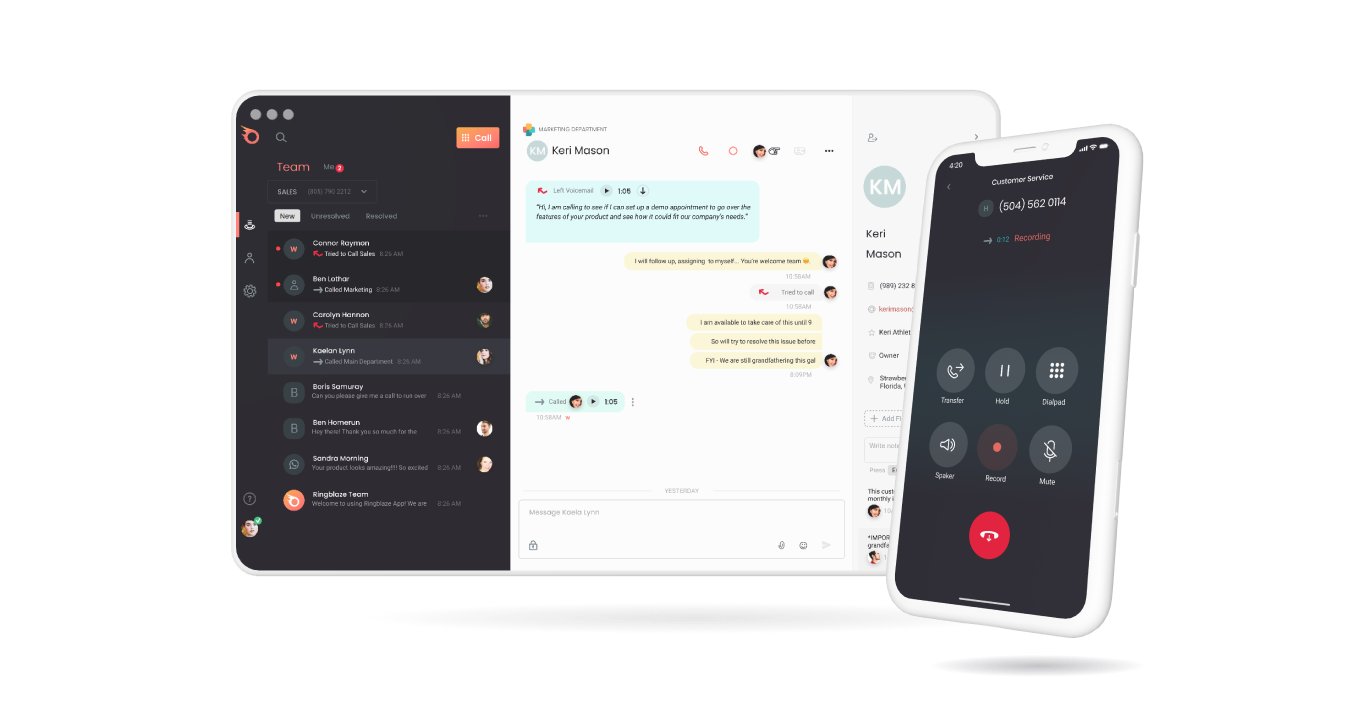Without a doubt, collaboration within your sales team is central to productivity and positive business outcomes. Research by Frost & Sullivan shows that workplace collaboration efforts boost company sales by 27% and customer satisfaction ratings by 41%. Another study by McKinsey reveals that collaboration boosts productivity by 25%.
Moreover, collaboration at work has a direct and significant impact on the employee’s morale and productivity.
Yet, businesses struggle to encourage sales team collaboration. That’s because salespeople, at large, are driven individuals who are innovative but resilient solo operators.
A cohesive sales workforce can be a huge asset to a business. If you need to up your sales game and skyrocket your productivity, collaborative working can get you there.
In this post, you will find practical ways to improve team collaboration, thereby enhancing your sales processes and profitability.
1. Leverage Tools That Promote Collaboration
A great way to improve collaboration in your sales team is to invest in tools that make it easy for the team to communicate, share data, and work together towards their revenue goals. Such collaborative tools streamline workflows, improve data quality, and enhance sales team efficiency and results. Further, these tools put an end to information silos, enabling teams to spend less time on administrative tasks and focus on what matters.
Here are a few other sales collaboration tools we recommend –
- Asana, Trello, or Monday.com – work management tools that allow sales teams to organize, track, and manage multiple projects. Thus, the team can stay in sync and work productively towards converting qualified leads into loyal customers.
- DealHub – a CPQ and sales proposal solution that streamlines the quote-to-revenue process. Further, the platform allows sales teams to issue proposals, close deals, and manage contracts among other sales priorities. It also serves as a sales forecasting tool by helping businesses predict future sales. It leverages AI to identify patterns in sales data
- Ringblaze is an affordable cloud-based business phone system that allows teams across locations to collaborate and solve issues effectively. It’s ideal for businesses with sales teams in multiple locations.

- CRM like Microsoft Dynamics 365, Salesforce, or HubSpot allow the team to manage customer relationships, and track leads and pipelines. These tools streamline the administrative processes and improve customer relationships.
- Canva, Adobe Creative Cloud Express, or Visme allow teams to create visual brand experiences through presentations, infographics, and documents.
Investing in sales collaboration tools is a great way to boost productivity internally and improve sales outcomes. These tools offer a centralized platform to collaborate and review deals, share their expertise, hold virtual meetings, and track customer interactions through the sales cycle.
2. Understand the Elements of an Effective Sales Collaboration
Effective sales collaboration happens when all its key elements are working together to build a collaborative sales environment.
Let’s look at them in detail.
- Sharing Information and Insights
Whether we are talking about business development reps (BDRs) or sales development reps (SDRs), each plays a part in sharing information on potential leads they have identified and ways to nurture and convert them.
Consider a scenario where the SDR isn’t privy to the conversations the BDR has with a prospect. This can lead to the loss of valuable information and lost opportunities.
Sales collaboration ensures each piece of information flows freely through teams, thus reducing the time to conversion and boosting productivity.
- Combined Strategizing
Imagine a scenario where the entire sales team comes together to brainstorm ways to navigate a tough deal. When the team pools their unique insights and skills, there are better chances of closing the deal.
For instance, if you have a large enterprise customer, get two or three reps that target the same company but different departments.
- Collaboration between Sales Managers and Reps
Sales team success isn’t just a group of reps focused on their job. It heavily depends on the relationship these reps share with their manager. Open communication between them fosters a culture of continuous learning and improvement. Further, the manager gets a ground-level view of the team and the business, allowing them to come up with strategies that are aligned with the team.
- Coordination between Sales and Other Departments
Consider another scenario where the sales rep is close to wrapping up a deal. In such a case, they should loop in the product, marketing, and customer success teams early to ensure they deliver an exceptional customer experience collectively.
3. Schedule Multiple Touchpoints
The sales team needs to be updated on the latest developments, be it product updates or launches, industry trends, or lead statuses. Make sure you schedule regular meetings and standups for quick updates and reviews for strategy alignment.
A constant rhythm of meetings allows teams to identify hurdles early. Thus, they can proactively pivot strategies and ensure everyone’s aligned and informed at all times.
Sharing knowledge, whether it’s a big or small business, is challenging. Data is usually scattered across many different sources or trapped in department silos.
Besides conducting regular meetings, it’s critical to invest in a single source of information like a knowledge management solution or a revenue marketing platform that effectively gets data in one place, automates analytics, and allows the sales team to free up their time for high-value activities. Investing in sales automation tools reduces repetitive tasks for reps, empowering them to work on identifying sales-ready prospects and boosting their conversion rate.
Sales reps need to have on-demand access to the answers they need. This pulls up the momentum, helps them close more deals, and boosts productivity.
4. Encourage Feedback
Feedback allows teams to learn about their successes and areas for improvement. It builds a strong feedback culture where each member of the sales team solicits and provides constructive and honest feedback to each other.
Sales leaders should encourage reps to communicate, share, and learn from each other. They can do this by modeling collaborative behavior.
- Schedule a weekly or a quick monthly standup where the sales team openly shares updates on their leads and projects and feedback on the support or training delivered to them.
- Survey team members regularly. Use tools like Google Forms or SurveyMonkey that ensure anonymity and help in gathering honest feedback. This will allow you to address concerns and implement suggestions before it gets too late.
- Go for in-person meetings versus virtual. Face-to-face interactions build trust and rapport among teams and encourage them to share their concerns freely.
- Designate collaborative leaders to liaise between departments. These leaders should be adept at listening to feedback and acting upon it. This will reduce potential miscommunications and ensure that all sales initiatives are cohesive and purpose-driven.
- Incorporate a recognition system – a shout-out or a quarterly award event – to foster a culture of celebrating success. Recognizing the performance of sales teams makes them feel valued and recognized, driving them to achieve more.
Summing Up
Salespeople are usually highly motivated, competitive, and individualistic. However, a collaborative sales team is always likely to make it to the top.
Use the collaboration tactics shared in this post to build an efficient sales team and operation. A productive sales force means improved organizational agility, more customers, and more revenue.
